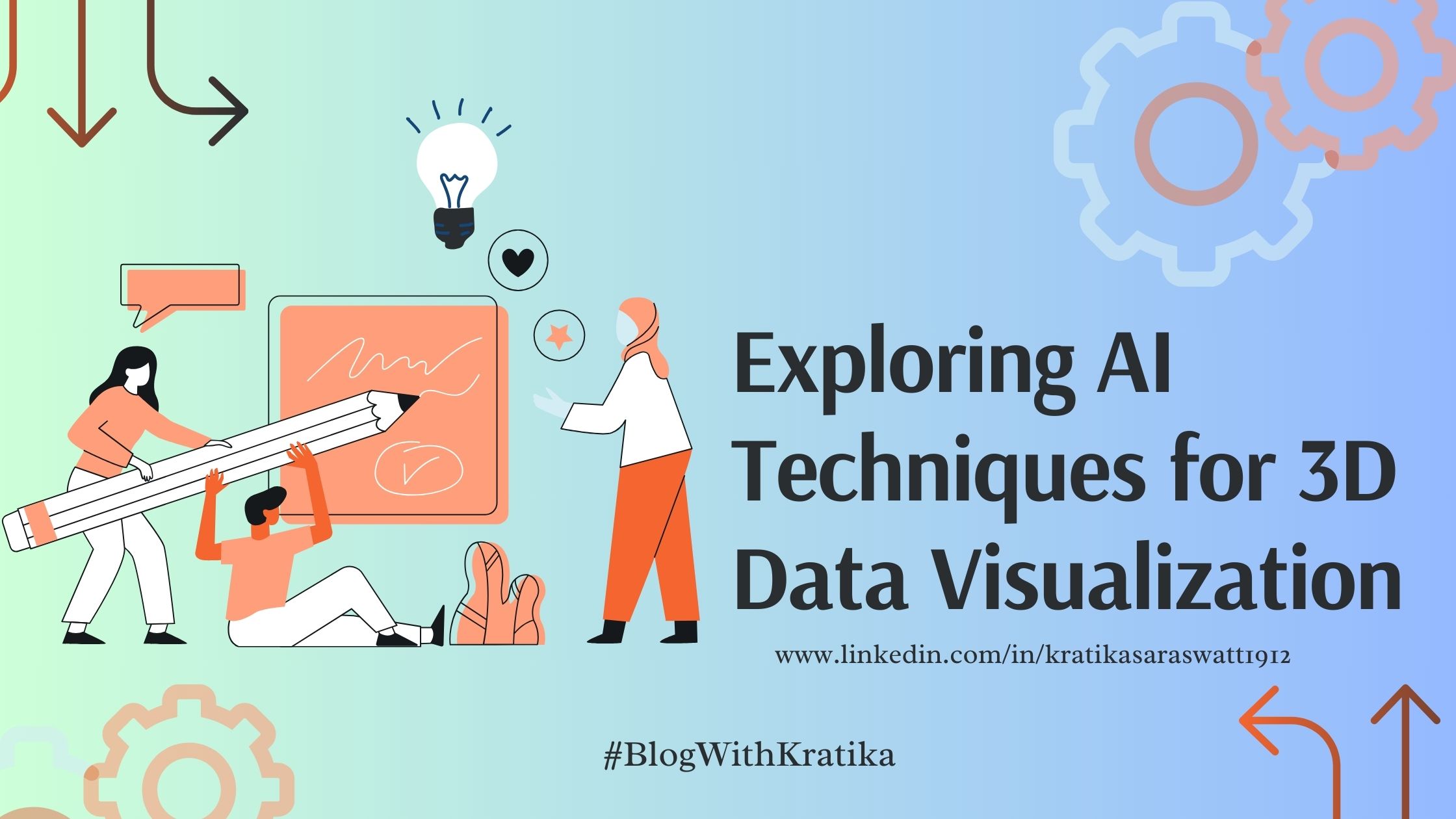Exploring AI Techniques for 3D Data Visualization
 Kratika Saraswat
Kratika Saraswat
In today's data-driven world, the ability to visualize complex datasets effectively is crucial for making informed decisions. Traditional 2D data visualizations, such as bar charts, line graphs, and scatter plots, have long been the go-to methods for representing data. However, as datasets become larger and more intricate, there's a growing need for more advanced visualization techniques. This is where 3D data visualization, enhanced by artificial intelligence (AI), comes into play.
AI techniques are revolutionizing 3D data visualization, making it possible to explore, analyze, and understand data in ways that were previously unimaginable. This blog delves into how AI is enhancing 3D data visualization, exploring the techniques, benefits, and future potential of this cutting-edge approach.
The Rise of 3D Data Visualization
3D data visualization allows for the representation of data in a three-dimensional space, providing an additional layer of depth and complexity. This can be particularly useful when dealing with multi-dimensional data, as it allows for the visualization of multiple variables simultaneously. However, creating meaningful 3D visualizations can be challenging due to the sheer volume of data and the intricacies involved in rendering and interpreting these visuals.
AI techniques are stepping in to bridge this gap, offering powerful tools to automate, enhance, and simplify the process of creating and interacting with 3D visualizations.
AI Techniques Enhancing 3D Data Visualization
Dimensionality Reduction
- One of the primary challenges in 3D visualization is handling high-dimensional data. AI algorithms, such as Principal Component Analysis (PCA) and t-Distributed Stochastic Neighbor Embedding (t-SNE), are used to reduce the dimensionality of the data, making it easier to visualize in 3D. These techniques help in preserving the essential patterns and relationships within the data while reducing complexity.
Automated Feature Extraction
- AI can automatically identify and extract relevant features from large datasets, streamlining the visualization process. By automating feature extraction, AI helps in highlighting the most significant aspects of the data, making it easier to create meaningful 3D visualizations that focus on the most important variables.
Intelligent Clustering
- Clustering algorithms powered by AI, such as K-means and DBSCAN, can group similar data points together in a 3D space. This is particularly useful in identifying patterns, trends, and anomalies within the data. In 3D visualizations, these clusters can be represented in different colors or shapes, making it easier to interpret complex datasets.
Predictive Modeling
- AI-driven predictive models can be integrated into 3D visualizations to forecast future trends based on historical data. This allows users to not only visualize the current state of the data but also to explore potential future scenarios. Predictive modeling enhances decision-making by providing insights into possible outcomes.
Interactive Visualization Tools
- AI-powered tools are enabling more interactive and immersive 3D visualizations. For instance, virtual reality (VR) and augmented reality (AR) technologies, combined with AI, allow users to explore 3D data visualizations in an immersive environment. These tools enable users to interact with the data in real-time, making the analysis more intuitive and engaging.
Automated Data Annotation
- Annotating large datasets for 3D visualization can be time-consuming and prone to errors. AI techniques, particularly those involving natural language processing (NLP) and computer vision, can automate the annotation process. This ensures that the data is accurately labeled and organized, leading to more reliable and insightful visualizations.
Benefits of AI-Enhanced 3D Data Visualization
The integration of AI into 3D data visualization offers several benefits:
Improved Accuracy: AI algorithms can process vast amounts of data with precision, reducing the risk of errors and enhancing the accuracy of visualizations.
Scalability: AI enables the handling of larger datasets, making it possible to visualize complex data at scale.
Enhanced Insights: By automating feature extraction and clustering, AI helps uncover hidden patterns and relationships within the data that might be missed with traditional methods.
Interactivity: AI-driven tools make 3D visualizations more interactive, allowing users to explore data in a more hands-on and intuitive manner.
Predictive Power: Integrating predictive models into visualizations provides valuable foresight, helping businesses and researchers make data-driven decisions.
The Future of AI and 3D Data Visualization
As AI continues to evolve, its impact on 3D data visualization will only grow. We can expect to see more sophisticated algorithms that can handle even larger datasets, more intuitive tools for interacting with 3D visuals, and deeper integration of AI-driven insights into everyday business and research processes.
The future of 3D data visualization lies in the synergy between AI and visualization technologies. By combining the analytical power of AI with the depth and interactivity of 3D visuals, we are moving towards a future where data is not just seen but experienced.
Conclusion
AI is transforming 3D data visualization, making it more accessible, accurate, and insightful. From dimensionality reduction to interactive visualization tools, AI techniques are enhancing the way we visualize and interpret complex data. As these technologies continue to advance, 3D data visualization will become an increasingly powerful tool for making data-driven decisions in a wide range of fields.
Subscribe to my newsletter
Read articles from Kratika Saraswat directly inside your inbox. Subscribe to the newsletter, and don't miss out.
Written by
